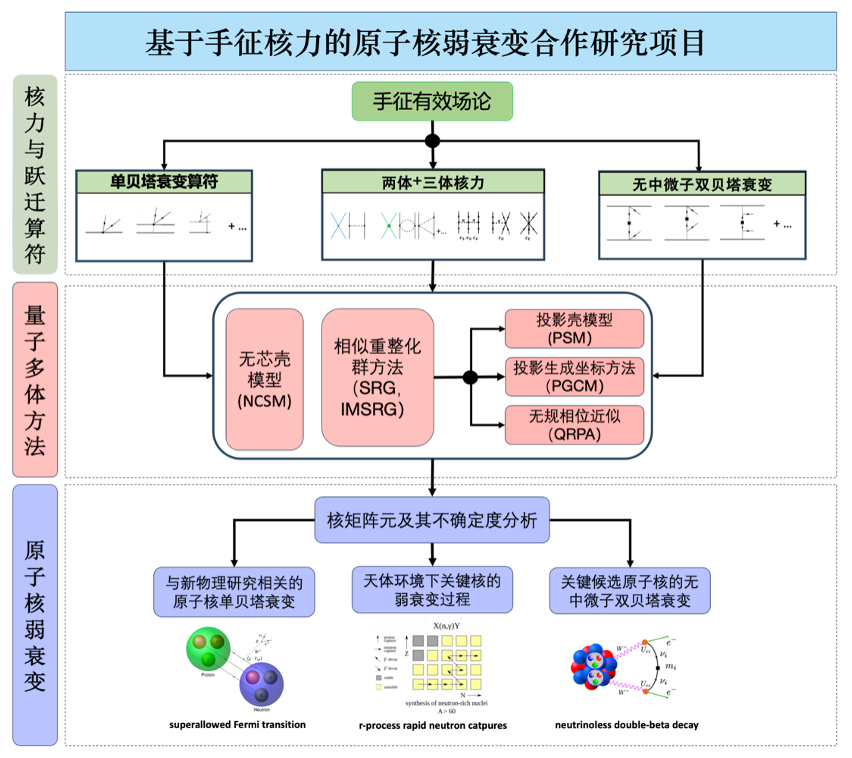Nuclear weak decays (including single/double 𝛽β decay and electron capture) are key topics at the intersection of nuclear and particle physics, playing a crucial role in testing fundamental symmetry violations, revealing neutrino properties, and understanding the origin of elements in the universe.
Beta decay is one of the most important decay modes of atomic nuclei, as most unstable nuclei transform into stable ones through this process. On the one hand, studies of single beta decay have led to groundbreaking discoveries such as the existence of neutrinos and parity violation in weak interactions . Currently, researchers use superallowed Fermi transitions in nuclear beta decay to test the unitarity of the CKM quark mixing matrix, employ precision measurements of single beta decay to constrain non-standard weak interaction parameters, and investigate neutrinoless double-beta decay to determine the nature and absolute mass of neutrinos. The latter also provides insights into possible lepton number violation, which is crucial for understanding the matter-antimatter asymmetry in the universe. In these new physics searches, the accuracy of nuclear matrix elements (NMEs) directly impacts experimental design and the precision of extracting physics parameters.
On the other hand, nuclear weak decay rates govern the rapid neutron capture process (r-process), which determines the timescale and abundance of heavy elements beyond iron. Accurate weak decay rates are essential for understanding stellar evolution, supernova explosions, neutron star mergers, and neutron star cooling. However, most key nuclear weak decay data are inaccessible to direct measurement and must be obtained from theoretical nuclear models. These models are primarily based on phenomenological effective nuclear forces and decay operators. Due to approximations such as free parameter tuning and model space truncations, different theoretical models yield significantly different NMEs with large and often unquantifiable uncertainties, severely affecting the interpretation of relevant physical processes.
Therefore, in-depth theoretical studies of nuclear weak decay are crucial for understanding nuclear structure and stability, searching for new physics beyond the Standard Model, and simulating nuclear processes in astrophysical environments.
This project aims to develop a theoretical framework for investigating weak decays in medium-heavy deformed nuclei based on nuclear forces and weak decay operators derived from chiral effective field theory and utilizes renormalization group methods.

